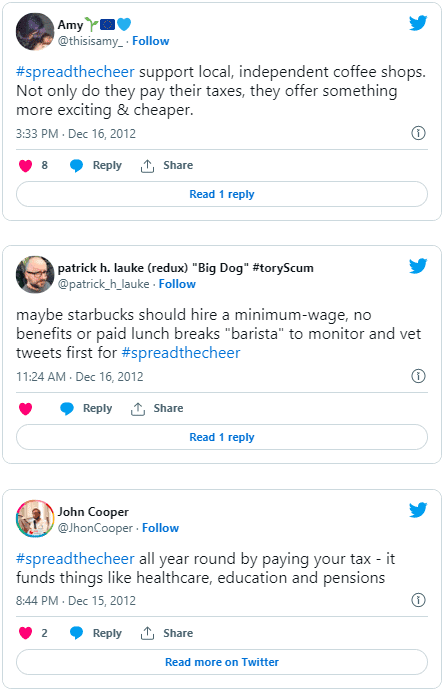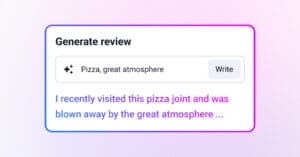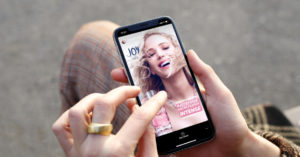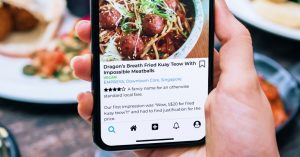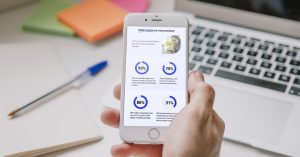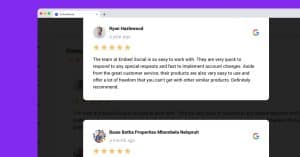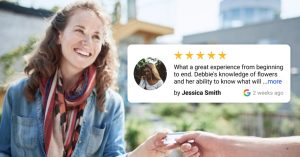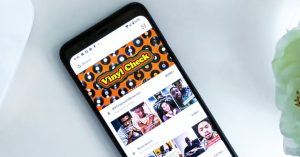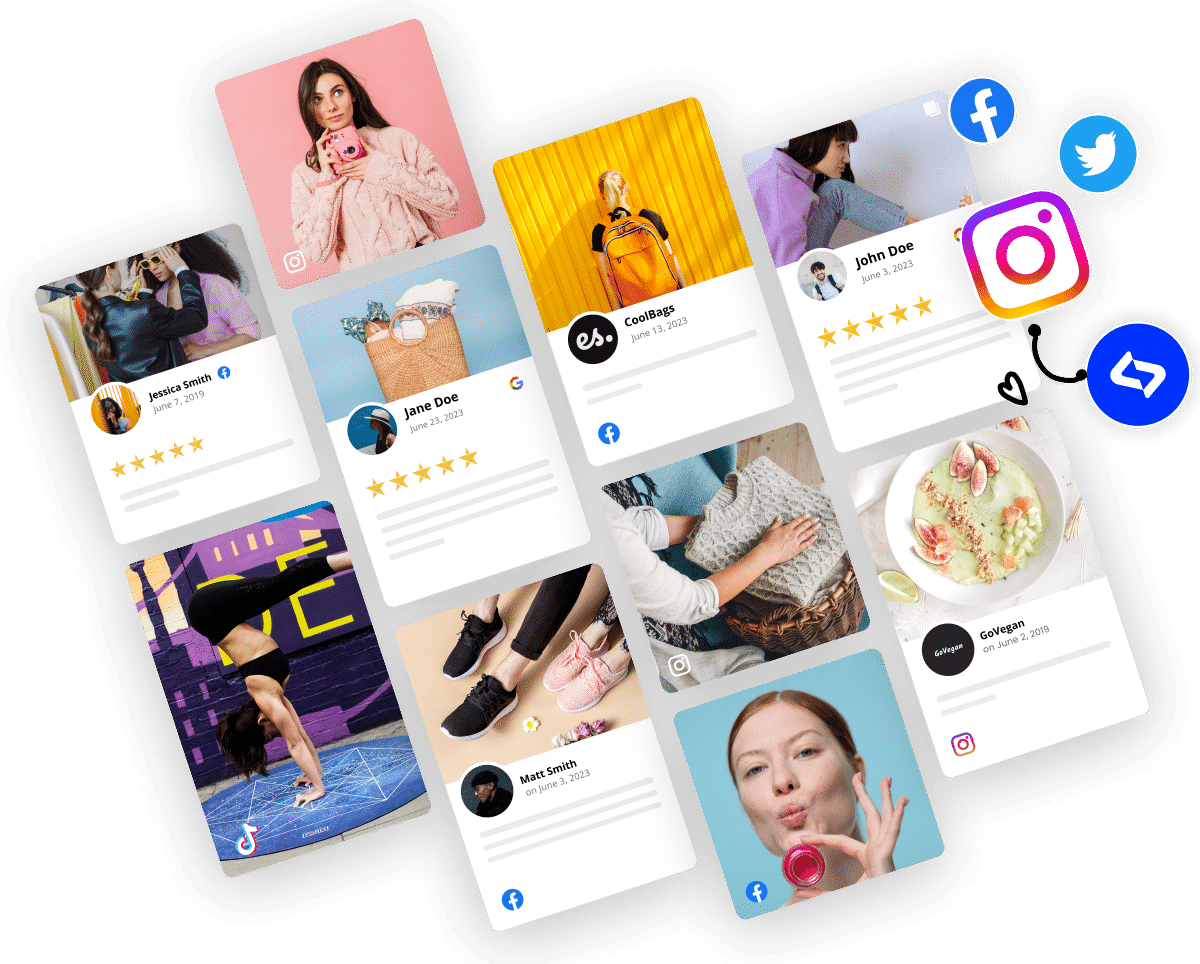It feels like this year, everyone is talking about user-generated content and how great it is for brands and it’s obvious why. It’s hard to miss a campaign that has 1 million users involved and has been able to generate so much exposure for a specific brand.
But, UGC is not really a safe card that marketing teams can play whenever they need to spread brand awareness. To be more precise, there is bad user-generated content that can totally mislead the point of the campaign and make it a big failure for the brand.
Even big companies that were already successful at traditional marketing had their fair share of bad user-generated content campaigns. Hence, if you are new to UGC campaigns, you need to know there is no proven guide that can guarantee your UGC campaign won’t fail.
However, the only thing brands and agencies can do analyze and learn from failed user-generated content campaigns. Then make sure they don’t make the same mistakes when launching a UGC campaign.
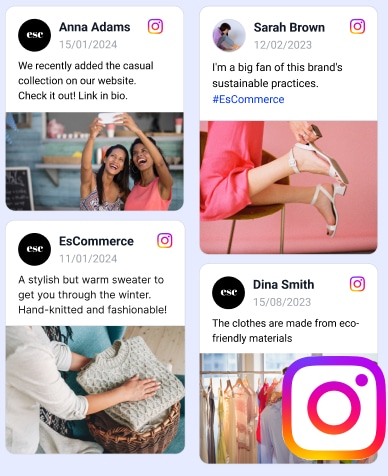
Embed Instagram feed on your website without lifting a finger!
Generate and embed Instagram widget with your feed, mentions, or hashtags directly to your website.
FYI: You can automatically embed an Instagram widget with a social media aggregator, bringing your website to life with fresh content.
What is a bad UGC campaign?
We’ve all witnessed unsuccessful marketing campaigns. Whether campaigns fail to create relevant, compelling, or engaging content or cases where the content is good content but it’s shareable or viral. Marketing is an unpredictable world, and campaigns might not give you the expected results.
Worse than that is a bad UGC campaign that fails to meet campaign objectives and turns in an opposite direction, often harnessing brand reputation. Simply put, bad user-generated content is produced when people must address issues they have with a specific brand. If they haven’t been heard in the past, they use viral hashtags as an opportunity to speak up about the matter in question.
Bad UGC campaigns are usually poorly executed, launched without thorough research, or with an intent to force love after some incident. They can be invasive in nature and may not be appropriate for a given brand or industry.
10 bad user-generated campaigns
You can easily get wrapped up in the excitement of user-generated content. After all, it’s a great way to get your brand out there and connect with consumers. But if you’re going to use it, you need to make sure it’s done right.
Here’s a list of 10 bad user-generated campaigns that brands made over the years. Find out why campaigns went wrong and make sure you won’t make the same mistakes that will cost your brand reputation.
Starbucks #SpreadTheCheer
Starbucks introduced the #SpreadTheCheer campaign around Christmas with the intent to spread cheerful holiday messages to everyone. They were hoping the campaign would be a huge success. Hence, they went a step further and broadcasted all #SpreadTheCheer tweets live on the ice rink wall at the National History Museum. (Source)
But what went wrong is that the campaign was released soon after they were publicly accused of not paying taxes in full. Therefore, angry users hijacked the hashtag and tweeted about the taxes issue and everything Starbucks has done wrong through the years.
As a solution, Starbucks apologized with a statement on the wall saying: “We apologize to any visitors who may have been offended by inappropriate messages displayed on the Twitter wall screen at the Natural History Museum’s ice rink café on Sunday. This was due to a temporary malfunction with the content filtering system.”
Marketing takeaway
Although this is an older example, the takeaway is to never release a UGC campaign if at the moment or in the near past, your brand went through a scandal. Give people some time to forget, and, in the meantime, focus on doing something good that will help your brand to gain back respect. Otherwise, you will get tons of bad user-generated content, as happened for Starbucks.
Furthermore, the live Twitter broadcast was really risky, even in 2012. On the internet, not everybody has the intent to spread cheer. Contrary, most people are just waiting for an opportunity to address their issues with brands or people. Therefore, a live broadcast of user-generated content is not a good idea since the content is not in your control.
McDonald’s #McDStories
#McDStories was a hashtag campaign launched on Twitter of inspiring heart-warming stories about Happy Meals. Unfortunately, the campaign went horribly wrong. People started posting stories of their unpleasant McDonald’s experiences and all of their failures and shortcomings.
People saw an opportunity to address all their complaints, and they started pointing out everything from bad service, to the fast food experience and more. The worst part was McDonald’s already paid for #McDStories to be on the Twitter trending list. Hence, the campaign already got huge attention from Twitter users and UGC creators.
Furthermore, as McDonald’s started getting plenty of bad user-generated content, they pulled the campaign within two hours. But, even though crowd-sourced campaigns can bring amazing results, they are hard to control or stop. Thus, even after the campaign was pulled off, people kept tweeting their McDonald’s horror stories.
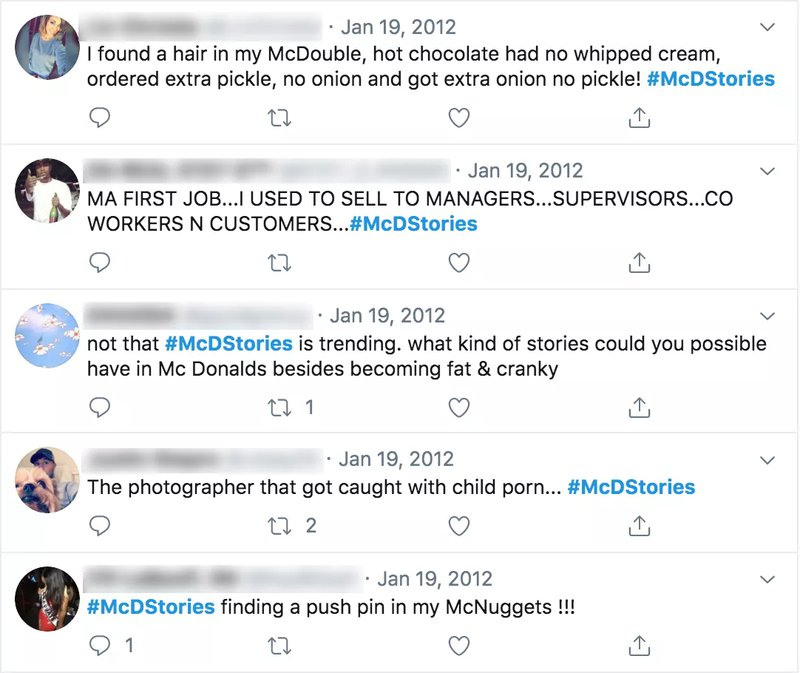
This is an example of how a brand hashtag turned Bashtag: #McDstories to #McDHorrorStories.
/Bashtag/ A hashtag created to criticize a campaign, organization or person.
Bashtags are still very much in play, and we see them everyday.
Marketing takeaways:
McDonald’s definitely should’ve been prepared for such failures by identifying potential failures prior to the campaign. As brands target ideal customers they should be able to identify niches of people that have something against their products or brands. Especially when launching a UGC campaign and spending money on trending Twitter hashtags.
In the end, McDonald’s should’ve tried to initiate a more positive aspect of the hashtag instead of canceling the campaign so soon. At that point where the campaign already has become a global marketing failure, they had nothing to lose, but they had a slight change to encourage people further into sharing positive content.
#MakeItHappy by Coca-Cola
Coca-Cola is a company known for spreading cheer through amazing humanity-loving marketing campaigns. However, things can go down even for the best. So, Coca-Cola had its share of a bad UGC campaign that got out of control.
In 2015 they released the #MakeItHappy campaign to make the internet a happier place. More specifically, Twitter users had to tag every hateful tweet with #MakeItHappy, and Coca-Cola would transform the negative content into a cute positive graphic using ASCII.
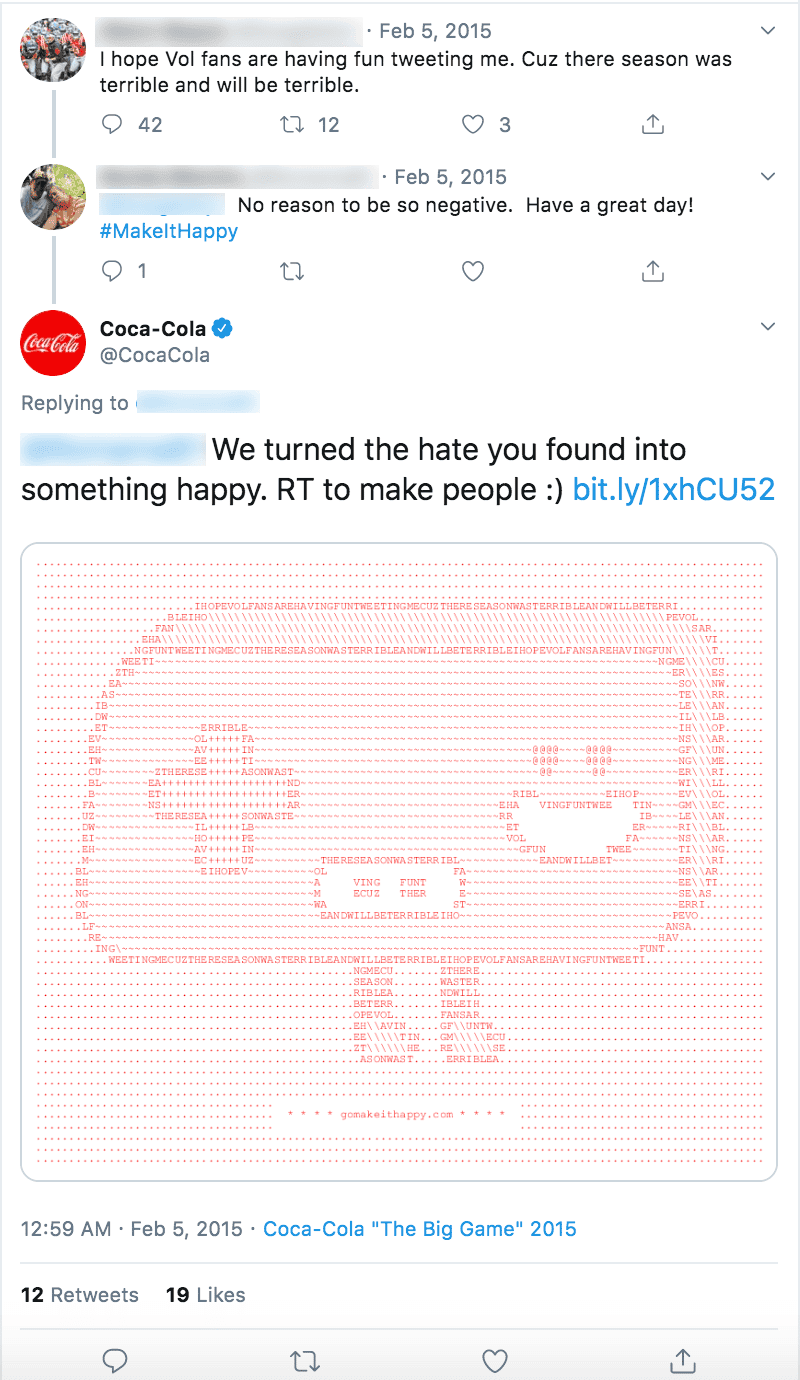
But they forgot that not everyone on the internet is willing to spread positivity. Thus, the campaign was hijacked by Gawker, and it was tricked into quoting Mein Kampf.
More specifically, Adam Pash, Gawker’s editorial labs’ director, created a Twitter bot, @MeinCoke, and set it up to tweet lines from Mein Kampf. The worst part is, the bot used the #MakeItHappy hashtag and it triggered Coca-Cola’s own Twitter bot to turn them into cute pictures. That led to Coca-Cola’s Twitter feed broadcasting big chunks of Adolf Hitler’s text.

Due to the circumstances, Coca-Cola withdraws the #MakeItHappy campaign saying, “The #MakeItHappy message is simple. The internet is what we make it, and we hope to inspire people to make it a more positive place. Unfortunately, Gawker is trying to turn this campaign into something that it isn’t.”
However, let’s not ignore the fact that the campaign was not an absolute failure. It succeeded in bringing joy and it had great goals. But, unfortunately, leaving everything to bots came up with a price they had to pay.
Marketing takeaway
Knowing the internet today, Coca-Cola should have been prepared for such a turnout of the campaign. When planning a UGC campaign brand must properly plan everything for possible problems. Otherwise, just like in this case, things can easily get out of control, and you will receive tons of bad user-generated content.
However, the Coca-Cola team did the right thing by releasing the statement that showed they are the good guys in this story. The statement concluded: “Building a bot that attempts to spread hate through #MakeItHappy is a perfect example of the pervasive online negativity Coca-Cola wanted to address with this campaign.”
#CoalisAmazing campaign by The Minerals Council of Australia
Coal is known to be a purveyor of climate change. That’s why The Minerals Council of Australia launched a campaign that will explain the value of coal burning to the Australian public.
The campaign was promoted everywhere with videos, promotional posters, and the campaign hashtag #CoalisAmazing.

Their goal was to spotlight all the benefits, like more job opportunities for people and light production. But as expected, the campaign took the opposite direction when it got the attention of environmentalists worldwide. Then, the hashtag #CoalisAmazing was used to highlight all the negative coal stories.
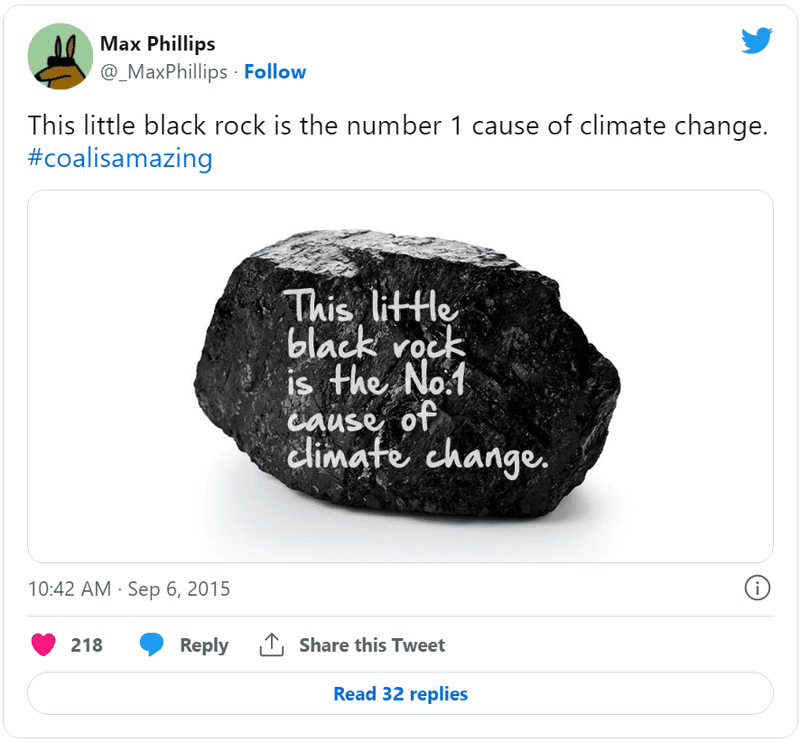
The hashtag did go viral, but without a doubt, more people advocated against the use of coal. Hence, this bad UGC campaign was the “PR fail of the year”
What was worst for The Minerals Council of Australia than the failure of the campaign is that after it pivoted, this campaign opened the eyes of many people who before the campaign were not familiar with the damage of coal and learned about other renewable energy sources that are better.
In the end, this UGC campaign didn’t give mining companies an avenue to promote coal. Moreover, it opened opportunities for environmentalists to educate the public to do their part in fighting climate change.
Marketing takeaways:
Even though a month after the campaign, the CEO of the Minerals Council said that they expected a backlash and were satisfied with the results, from a marketing perspective, this was just another bad UGC campaign that didn’t achieve its results. They say they wanted to get more members, but even if that is true, those members came at a cost.
Another thing is that they didn’t make thorough research on the topic they planned a whole campaign. At that time, environmentalists were already sneaking and making a case against nonrenewable sources of energy and how they affect climate change. So on one hand, the negative effects of coal would anyway be presented to the Australian public. Still, this campaign just made the process a lot faster, leveraging the viral hashtag.
#CosbyMeme by Bill Cosby
A campaign from the PR team of the comedian, actor, and author Bill Cosby is also one of the biggest failures in the UGC campaign. Over the years, several women made sexual assault allegations against Bill Cosby.
Yet, his PR team decided to create a UGC campaign where people needed to create funny Bill Cosby memes. For that purpose, they released an application on his website that turned his photos into memes in a few seconds.
The goal of this bad UGC campaign was to show him as a more human, funny, and loveable man. But this obviously didn’t work.
This campaign couldn’t change people’s minds. Instead, it gave them a great opportunity to achieve the exact opposite. People hijacked the campaign and a campaign turned into that further suggested that Cosby was truly guilty.

When the campaign backfired, Cosby’s team took the application down. But the damage was already done and the #CosbyMeme campaign painted Cosby as a pervert and damaged his reputation even more.
Marketing takeaways:
You can’t force love! It doesn’t work in real life, it won’t work in the digital world as well. As we said, UGC campaigns can be unpredictable because what is posted doesn’t depend on you. However, if somebody’s reputation is ruined, whether a person or a brand, it’s most expected for such things to happen.
Another thing that the PR team missed out on is a contingency plan which is something you need always when you’re implementing a UGC campaign.
#myNYPD campaign by the New York Police Department (NYPD)
In 2014, the official Twitter profile of NYPD invited the public to share their photos using the hashtag #myNYPD.
This UGC campaign was launched to create a better image for NYPD officers and rebuild trust after the incident when a white officer shot unarmed black 18 years old man.
You guessed right. This is another campaign that forced love and rushed into things after a huge incident involving losing people’s trust.
Since people were angry and disappointed about police brutality, the campaign quickly turned into an online protest. Thousands of citizens tweeted using the #myNYPD hashtag to highlight instances of abuse, police brutality, and racial profiling.

In only two days, 100,000 tweets were published using #myNYPD, most of them posting everything from using their batons to “frisking dogs”.
Marketing takeaways:
In such a crisis when NYPD’s reputation was already broken, one thing they shouldn’t do is try to force love and do a quick fix. Instead of the campaign, they should have worked slowly and steadily to build trust.
Furthermore, not only they didn’t have a contingency plan, but they also said that “there is no such thing as bad publicity”.
On the other hand, NYPD didn’t give up and it engaged with positive tweets till the end of the campaign. In the end, they even gained 4000 followers.
#AskSeaWorld by SeaWorld
This is a story of another bad UGC campaign that rushed things to change the negative reputation.
In 2013, the “Blackfish” documentary was released telling the story of a captive killer whale that has taken the lives of three people. The public was shocked, and they judged SeaWorld for keeping orcas in captivity.
Two years later, SeaWorld released the campaign #AskSeaWorld to rehabilitate its image after the movie. Their goal was to educate their users. Therefore users were asked to post questions on Twitter that SeaWorld would answer on their site.
But people didn’t change their opinion. Instead, they started bringing up animal welfare issues and asking where the park would finally close.

Moreover, when the documentary was released, SeaWorld said it was “shamefully dishonest, deliberately misleading, and scientifically inaccurate.”. Hence, people knew the documentary provoked the campaign, meaning SeaWorld denied the film’s morbid facts.
Marketing takeaways:
Even though they waited until after the documentary to launch the campaign, SeaWorld forget that some things cannot be forbidden over time. Something serious like dangering human life can’t be forgotten even after a few years passed.
What heated the backfire, even more, was the fact that PETA (People for Ethical Treatment of Animals) was constantly calling SeaWorld on its animal care. And with PETA came other animal lovers disapproving of SeaWorld’s actions.
Consequently, this marketing push gained a bad reputation, and even company stock dropped 50% below its all-time high.
#AskJPM by JP Morgan
In 2013, JP Morgan, a commercial bank from the USA, planned on hosting an open Q&A on Twitter, using the #AskJPM hashtag.
To submit a question, people had to use the hashtag, and then Vice Chairman Jimmy Lee had to answer. The campaign was announced a week before the Q&A was planned, and they also announced the topic that was about leadership and career advice.
But at that time, JPMorgan was one of the most criticized commercial banks in the USA. They faced a few criminal probes, one examining its relationship with Ponzi scheme kingpin Bernard Madoff and one that connected the bank with possible bribery in Asia.
JPMorgan was negotiating an agreement to resolve the cases and also two ex-employees were indicted for trying to cover up a record-breaking trading loss last year.
Because of all that, a day before the Q&A session, when they tweeted a reminder for people to ask questions using the hashtag, people backfired with tweets highlighting all the bad things they knew about JPMorgan.


Consequently, JPMorgan called off the Q&A within a few hours after the second tweet.

Marketing takeaways:
Big brands fall big. When a big company creates a bad UGC campaign, there are big consequences due to the attention it gets from the start. Besides, the fact that a company with such a reputation and dirt in the past didn’t prepare for the worst-case scenario is irresponsible.
Lastly, Twitter is an unfiltered, raw, and uncontrolled platform. Hence, it’s unable to script a campaign. Instead, everything is more spontaneous, and the content is usually created impulsively instead of thoughtfully. That’s why when you ask people for user-generated content you will get the first thing that comes to their mind. Unfortunately, in this case, it was the criminal accusations of JPMorgan.
#Agile2013 by Agile Alliance
Agile was a big business conference for networking among professionals. It was a huge conference, with a serious approach and highly professional organization, keynote speakers, and networking activities. However, it had an unfortunate twist due to a bad UGC campaign.
The organization wanted to spread the word about the conference outside of the room and thought of creating a Twitter campaign. They even installed five interactive display boards, and whenever someone tweeted using the hashtag #Agile2013, the tweet would show on the boards. And as this idea didn’t work for Starbucks, it didn’t work well for them eighter.
At first, people loved it, they were tweeting about how amazing the conference was until one user tweeted requesting other users to post anything stupid using the hashtag #Agile2013.
Apparently, even though it was a conference of professional people, some users picked it up and decided to try it. Soon, the boards were filled with memes, jokes, and other things that were not related to the conference because the team at the conference couldn’t control the situation.
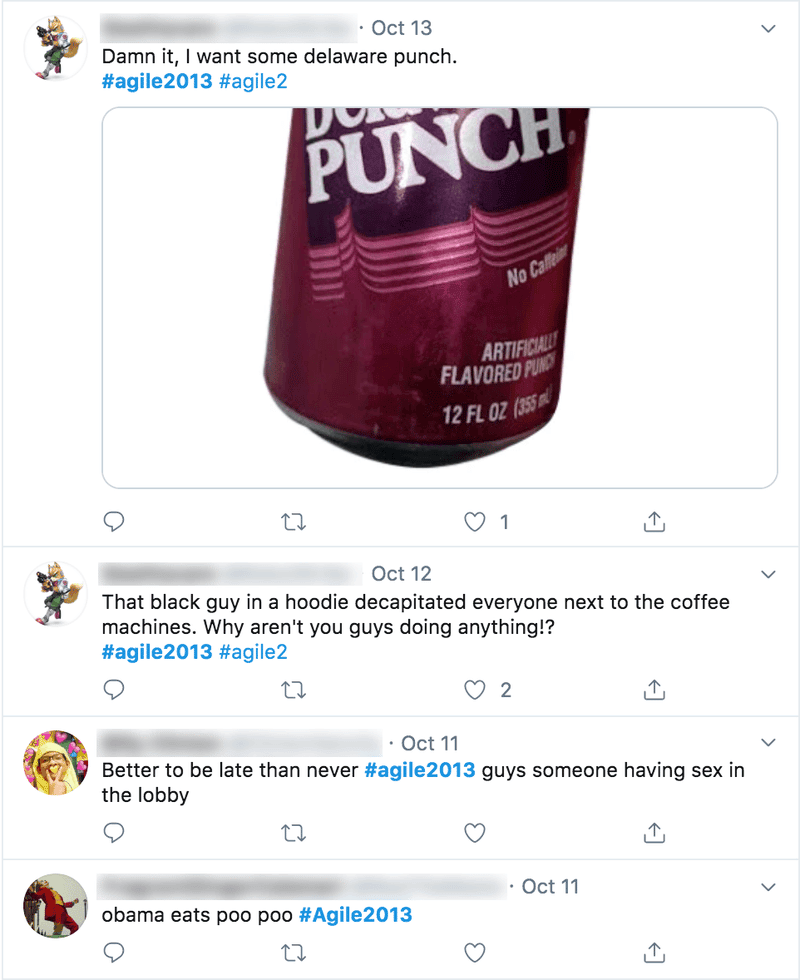
Marketing takeaway:
This example shows that these things don’t only happen to brands with mistakes in the past but people are simply always ready to take an opportunity to take over a campaign that is not filtered.
The mistake that the team of Agile Alliance made was not having a solution to filter the tweets. Especially since they decided to show them on boards in places the conference took place.
The tactic to spread the word about the conference online was great, but as we said, you can’t leave anything depending on people’s goodwill. One thing they should do right away is to turn off all the boards or stop displaying tweets.
And if they wanted to keep the campaign live, they should have announced another hashtag but also to find a way to filter the tweets before they displayed them on the screens.
#NotGuilty by Entenmann’s
Lastly, #NotGuilty is a failed UGC campaign due to a lack of research before using a trending Twitter hashtag.
The well-known American sweet manufactury saw an opportunity to jump on a viral hashtag and tweeted “Who’s #notguilty about eating all the tasty treats they want?!” with an intent to promote their new low-calorie sweets.
Unfortunately, the hashtag was viral because people were furious about the outcome of Casey Anthony’s trial. The topic was highly sensitive because the case was about a 2-year-old girl Cayle that was found dead in the woods near her family home. Arrested aspect for the murder was the girl’s mother, which in the end was found #notguilty.
Soon after the tweet, people criticized Entenmann’s insensitive behavior. The media outlets also were reporting on this tasteless tweet, and Entenmann’s, as soon as realized they had made a mistake, they deleted the tweet and apologized for the situation.

Marketing takeaway:
Doing research when jumping into a hashtag that is already trending in marketing 101. This is an example that even when the UGC campaign is not launched by the brand, it can attract bad publicity.
One thing they did right is writing a sincere apology and improving their reputation by increasing the pro-bono work Entenmann’s did for nonprofit organizations in need.
Summary of mistakes to avoid in UGC campaigns
Hopefully, by now, you have a better image of what can go wrong when launching a UGC campaign. To sum up, before you launch the next UGC campaign on social media, keep the most frequent mistakes in mind.
- Don’t launch a UGC campaign without a contingency plan.
- Don’t force the love.
- Do your research and find out how people feel about your brand.
- Check your hashtag whether it was used in some context or is misleading.
- Don’t rely on bots.
- Have a solution plan in case your hashtag is hijacked.
In the end, despite some bad UGC campaigns in the past, UGC is still a gold mine in digital marketing. You need to be extra careful every time you involve external people to be part of your campaign by making sure you avoid all of the biggest mistakes listed above.
To find out how to be successful with user-generated content, check our list of UGC campaigns examples.

Embed Instagram feed on your website without lifting a finger!
Generate and embed Instagram widget with your feed, mentions, or hashtags directly to your website.
FYI: You can automatically embed an Instagram widget with a social media aggregator, bringing your website to life with fresh content.


